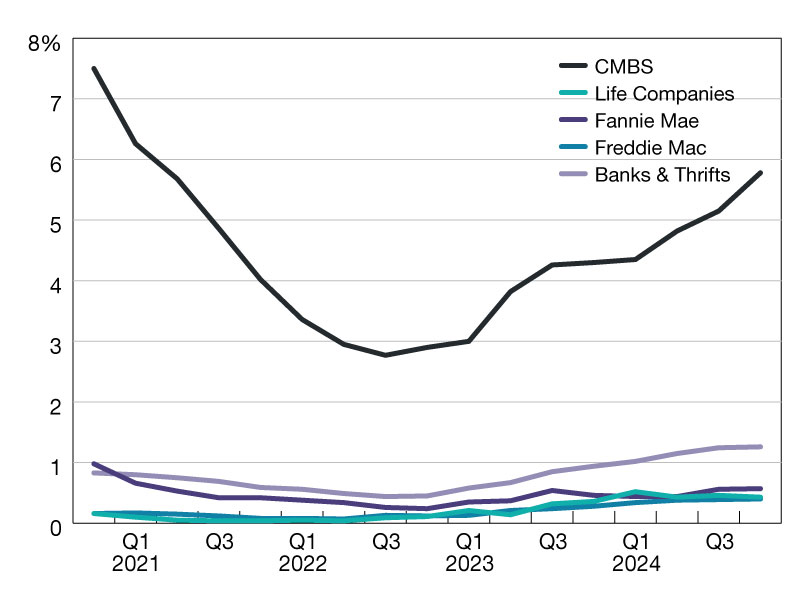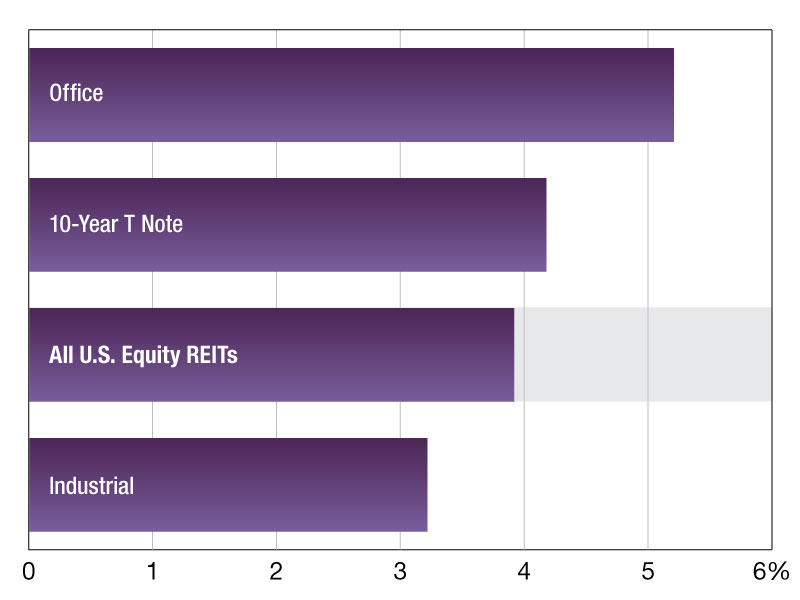Global CRE Allocations Rise, But Still Lag Targets
The latest annual survey by Hodes Weill & Associates and Cornell University examines how the world’s major institutional investors allocate investments to commercial real estate, we well as their sentiment toward the asset class.
By Scott Baltic, Contributing Editor
Although the average target allocation to real estate among global institutional investors increased 30 basis points to hit 10.4 percent in 2018, with a further rise of 20 basis points forecast for the next 12 months—and despite a rise in confidence—“institutions remain meaningfully under-invested in real estate,” according to Hodes Weill & Associates’ and Cornell University’s sixth annual Institutional Real Estate Allocations Monitor.
The survey examines both how the world’s major institutional investors allocate investments to real estate and their sentiment toward the asset class.
Target allocations broke the 10 percent threshold for the first time just last year, and they continued to climb, especially among EMEA (Europe, the Middle East and Africa) and APAC (Asia-Pacific) institutions.
“Interestingly, while the U.S. is still the preferred destination for investment, institutions are increasingly favoring investments in Europe and Asia as attractive opportunities in the U.S. become harder to find,” Douglas Weill, managing partner at Hodes Weill & Associates, said in a prepared statement.
“Institutional real estate portfolios delivered solid investment returns in 2017,” added Dustin Baker, director of the Baker Program in Real Estate at Cornell University. “Returns continue to outperform expectations, which is likely contributing to the increase we are seeing in investor conviction. This has in turn led to an acceleration in transaction volumes and capital deployment across regions.”
Among survey participants, insurance companies and public pension entities increased their target allocations by 50 and 30 basis points, respectively. The former have been seeking greater exposure to yield-producing real estate to match their liabilities. The growth on the public pension side was driven primarily by European pension plans, which increased target allocations by 70 basis points year-over-year.
Meanwhile, with a 130 basis points decrease, endowments and foundations had the most significant year-over-year reduction in target allocations.
While global CRE allocations continue to climb, although more slowly, the report found that institutions remain about 90 basis points under-invested relative to their target allocations. Insurance companies are on average the most under-invested, at 7.3 percent, while endowments and foundations are tracking comparatively closer to their target allocations.
What this might mean here
So how could these findings, especially the estimates of relative under-investment in CRE, affect pricing and deal flow in U.S. real estate?
“Total investable assets held by institutions are estimated at $80 to $100 billion, if not more. Ninety basis points of under-investment implies substantial capital is available for investment,” Weill told Commercial Property Executive.
“While we are not suggesting that all of this capital will be put to work,” he continued, “this demonstrates that there is a continued weight of capital that should support transaction volumes and potentially asset pricing over the coming years.”
The typical under-investment by institutions, Weill explained, “can be attributed to a few factors, including overall growth in investable assets held by institutions, as many asset classes have generated strong returns and appreciation over the past several years, as well as uncalled capital, or dry powder. Uncalled capital for real estate private funds is now in excess of $250 billion, which is a cyclical high.”
The 208 institutions that participated in the survey represent aggregate AUM of $11 trillion and portfolio CRE investments totaling about $1 trillion.








You must be logged in to post a comment.